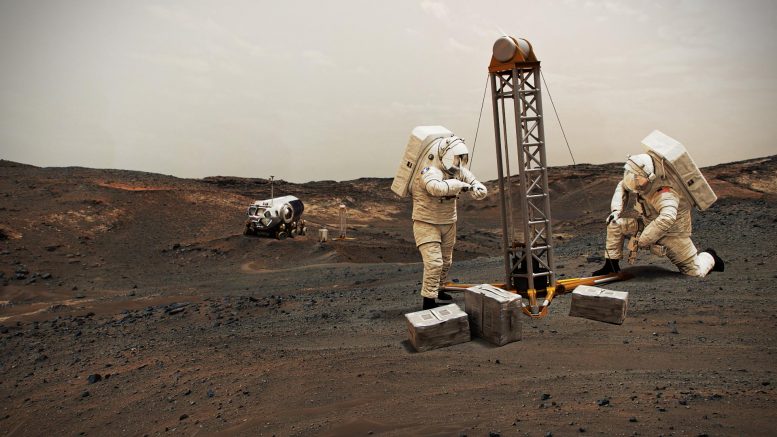
Mars is an obvious source of inspiration for science fiction stories. It is familiar and well-studied, yet different and far enough away to compel otherworldly adventures. NASA has its sights on the Red Planet for many of the same reasons.
Robots, including the Perseverance rover launching soon to Mars, teach us about what it’s like on the surface. That intel helps inform future human missions to the Red Planet. We’ll also need to outfit spacecraft and astronauts with technologies to get them there, explore the surface, and safely return them home. The roundtrip mission, including time in transit – from and back to Earth – and on the Martian surface, will take about two years.
Technology development has already begun to enable a crewed Mars mission as early as the 2030s. Many of the capabilities will be demonstrated at the Moon first, during the Artemis missions, while other systems are more uniquely suited for deeper space. Here are six technologies NASA is working on to make Mars science fiction a reality.
NASA is advancing many technologies to send astronauts to Mars as early as the 2030s. Here are six things we are working on right now to make future human missions to the Red Planet possible. Credit: NASA
1. Powerful propulsion systems to get us there (and home!) quicker
Astronauts bound for Mars will travel about 140 million miles into deep space. Advancements in propulsion capabilities are the key to reaching our destination as quickly and safely as possible.
It is too soon to say which propulsion system will take astronauts to Mars, but we know it needs to be nuclear-enabled to reduce travel time. NASA is advancing multiple options, including nuclear electric and nuclear thermal propulsion. Both use nuclear fission but are very different from each other. A nuclear electric rocket is more efficient, but it doesn’t generate a lot of thrust. Nuclear thermal propulsion, on the other hand, provides much more “oomph.”
Whichever system is selected, the fundamentals of nuclear propulsion will reduce the crew’s time away from Earth. The agency and its partners are developing, testing, and maturing critical components of various propulsion technologies to reduce the risk of the first human mission to Mars.

2. Inflatable heat shield to land astronauts on other planets
The largest rover we’ve landed on Mars is about the size of a car, and sending humans to Mars will require a much bigger spacecraft. New technologies will allow heavier spacecraft to enter the Martian atmosphere, approach the surface, and land close to where astronauts want to explore.
NASA is working on an inflatable heat shield that allows the large surface area to take up less space in a rocket than a rigid one. The technology could land spacecraft on any planet with an atmosphere. It would expand and inflate before it enters the Martian atmosphere to land cargo and astronauts safely.
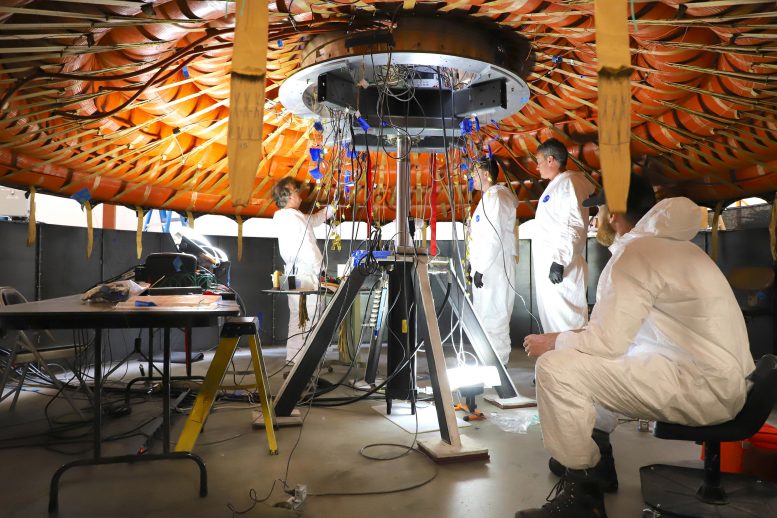
The technology isn’t ready for the Red Planet just yet. An upcoming flight test of a 6-meter diameter (about 20-feet) prototype will demonstrate how the aeroshell performs as it enters Earth’s atmosphere. The test will prove it can survive the intense heat during entry at Mars.
3. High-tech Martian spacesuits
Spacesuits are essentially custom spacecraft for astronauts. NASA’s latest spacesuit is so high-tech, its modular design is engineered to be evolved for use anywhere in space.
The first woman and the next man on the Moon will wear NASA’s next-generation spacesuits called the exploration extravehicular mobility unit or xEMU. The spacesuits prioritize crew safety while also allowing Artemis Generation moonwalkers to make more natural, Earth-like movements and accomplish tasks that weren’t possible during the Apollo missions.
Future upgrades to address the differences on Mars may include technology for life support functionality in the carbon dioxide-rich atmosphere and modified outer garments to keep astronauts warm during the Martian winter and prevent overheating in the summer season.

4. Martian home and lab on wheels
To reduce the number of items needed to land on the surface, NASA will combine the first Martian home and vehicle into a single rover complete with breathable air.
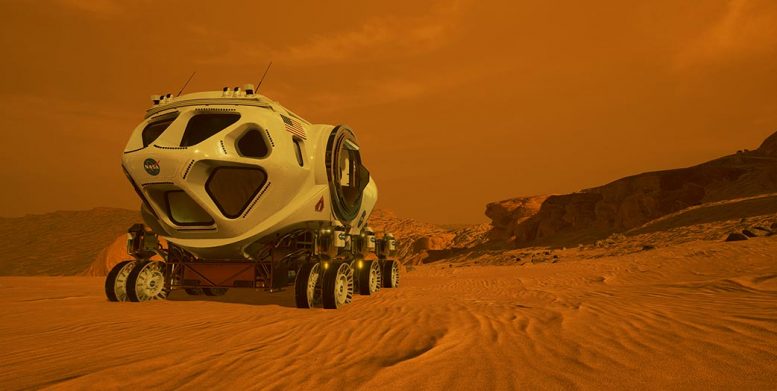
NASA has conducted extensive rover testing on Earth to inform the development of a pressurized mobile home on the Moon. Artemis astronauts who live and work in the future pressurized Moon rover will be able to offer feedback to help refine the rover capabilities for astronauts on Mars. NASA’s robotic rovers will help with the Martian design, too – everything from the best wheels for Mars to how a larger vehicle will navigate the tough terrain.
Much like an RV, the pressurized rover will have everything inside that astronauts need to live and work for weeks. They can drive in comfortable clothing, tens of miles from the spacecraft that will launch them back to space for the return trip to Earth. When they encounter interesting locations, astronauts can put on their high-tech spacesuits to exit the rover, collect samples, and conduct science experiments.
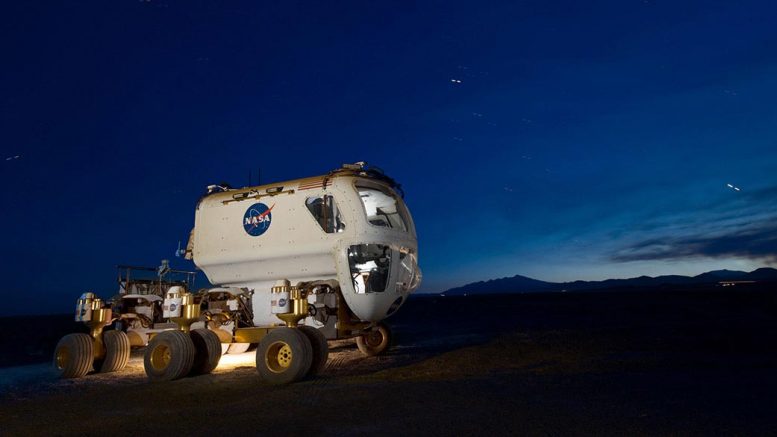
5. Uninterrupted power
Like we use electricity to charge our devices on Earth, astronauts will need a reliable power supply to explore Mars. The system will need to be lightweight and capable of running regardless of its location or the weather on the Red Planet.
Mars has a day and night cycle like Earth and periodic dust storms that can last for months, making nuclear fission power a more reliable option than solar power. NASA already tested the technology on Earth and demonstrated it is safe, efficient, and plentiful enough to enable long-duration surface missions. NASA plans to demonstrate and use the fission power system on the Moon first, then Mars.
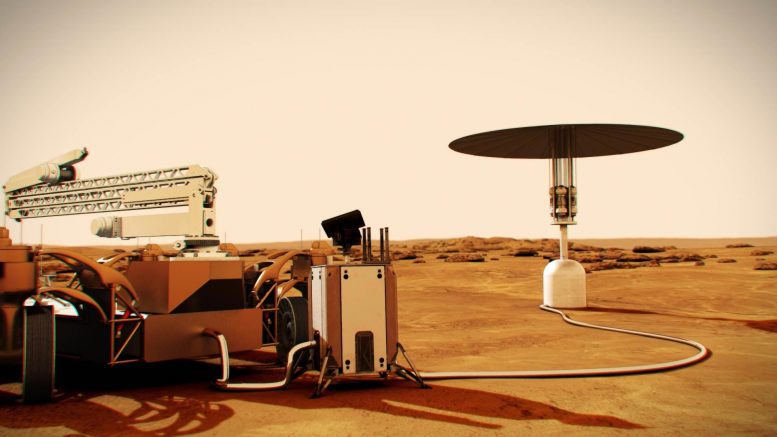
6. Laser communications to send more information home
Human missions to Mars may use lasers to stay in touch with Earth. A laser communications system at Mars could send large amounts of real-time information and data, including high-definition images and video feeds.
Sending a map of Mars to Earth might take nine years with current radio systems, but as little as nine weeks with laser communications. The technology would also allow us to communicate with astronauts, to see and hear more of their adventures on the Red Planet.
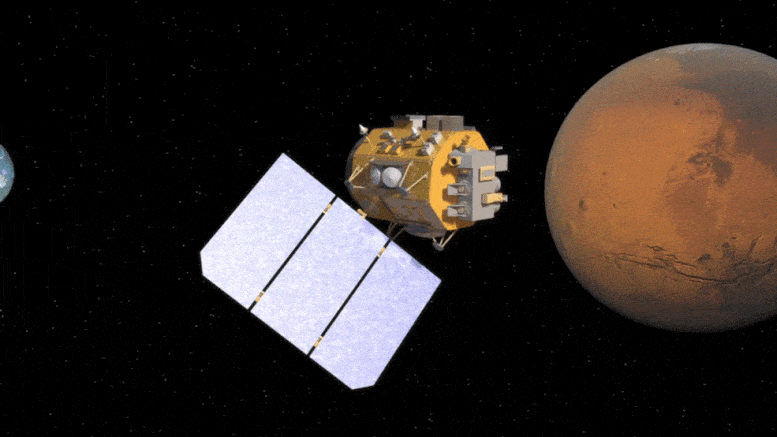
NASA proved laser communications is possible with a demonstration from the Moon in 2013. The agency’s next demo will work through different operational scenarios, perfect the pointing system, and address technology challenges from low-Earth orbit – things like clouds and other communications disruptions. NASA is building small systems to test for human spaceflight, including on the International Space Station and the first crewed Artemis mission. Another laser communications payload will venture to deep space to help inform what it takes to use the same technology millions and millions of miles away from Earth.
Never miss a breakthrough: Join the SciTechDaily newsletter.
29 Comments
Has any organism from Earth made the round trip to Mars? Aren’t we getting a bit premature in talking about sending people to Mars?
The longest a human has lived in space is about a year, and they’re still dealing with the radiation related physiological changes. It will take much longer to send and return people to Mars. This article is more hype more than science.
In this article you forgot the biggest obstacle travelling to Mars. It’s the strong cosmic radiation! There isn”t a solution yet
to protect astronauts during this long journey to Mars.
I agree
And not to mention how will the astronauts leave mars??
A huge rocket is needed with a ramp and a lot of fuel
On earth we need hundreds of people to setup a rocket
Well, we didn’t have any problem leaving the moon. Fuel can easily be produced on Mars. And SpaceX already has proof of concept that their rocket can land and take off again:
A “ramp”? Why? The rocket lands standing up like a candle.
A “lot of fuel”? Mars gravity is 1/3 that of Earth – so they only need 1/3 as much fuel. Actually less than that because they will return with very little payload…
Mars has next to know electromagnetic shield to protect itself from the sun’s radiation.
Why do we continue trying to go to live there when the whole environment is not hospitable to humans or life for that matter because of the fact there is no shield.
I wish we would stop with this fantasy and simply put the money into something more worthwhile.
Spending money to try and force fit ourselves to live on Mars is like building a boat with holes in it.
Because overpopulation and resource depletion are real. Add that to the human desire to explore and grow. All the research and tech developed helps normal life too. Where do you think superglue and Velcro came from.
👌👌
I suggest you just stick your head back in the sand and remain in denial. You probably don’t believe that the Apollo program has been a huge benefit to technology and invention that the entire world continues to benefit from today…
I totally agree. Why doesn’t anyone address the magnetoshpere issue. We can’t fix that. Isn’t living on mars akin to living near a ruined nuclear plant?
I agree. If no shielding, terraforming unrealistic.
As for propulsion, I can see that for mining asteroids and such. Has anyone thought about using earth’s nuclear waste products instead of dumping in the oceans?
I disagree!
Going underground seems to me to be the solution. The radiation would be greatly reduced, while tunneling underground would form living areas for terraformers.
A huge undertaking to be sure.
Human beings are exploding into numbers that are unsustainable on Earth, therefore we must forge ahead!
Waste has long since been avoided as solution due to risk of atmosphere pollution if rocket launch malfunctions.
This space colonization thing is creepy. These planets aren’t habitable. Most people ideas came from pure science fiction. The scientists that started this were Nazi transhumanists…. That we hired to keep an eye on not because we trusted them. It’s seemed strange to me for a white that some one keeps hyping the s*** out if colonizing planets that would suck to live on. Colonization efforts also tend to result in wars for independance. every one is so excited to colonize space but what is exciting about colonizing a freezing cold hell hole where your trapped in a camper all day. But you can’t leave the camper and go fishing. Your stuck in there. Till you die because there is no return trip. There are no laws or police. If they take you millions of miles away and regime their transhumanist Nazi experaments…. Who will be there to stop them? You can have my seat. I can’t wait to trade my seat to mars in exchange for the home of some gullible sap on earth. Its creepy the way people are just eating this up.
Hope on Mars second amendment will include business and cars
Hmm. Yeah. You’re right. Going to Mars and returning safely is a monumental challenge. I don’t think it means we should totally give up on the idea. All journeys, regardless of the time, the distance, and the difficulty, begin with the first step. Applies to every exploratory endeavor we’ve undertaken as a species.
And the technology we create to do that will benefit us in some way now and in the future so don’t turn your back on the idea.
I agree that we should do our absolute best and spare no expense to try and save the only home we’ve ever known, the planet Earth, but the people living on that planet have to acknowledge that there is a serious threat to that planet and our existence on it. We kill the Earth and we will soon follow.
You….need to go to Mars. All these ideas are based off science fiction. They used to think there were canals on mars. By the time they figured out how dead the planet was this idea had taken root in the human imagination. Whats creepy is people like you who keep furling this notion that this is some great undertaking. You need to go…. Take you wild ideas….and go away. You know so much why haven’t you left yet? Oh your not a scientist. You just believe all the fiction. Or you have an agenda. Go get on your tin foil ship and get out if here. You just need to clear a flight plan with the FAA. Oh you don’t have a pilots licence either. So what is it you think you know? Some one is selling you a hoe and a dream and if you were smart you would ask why. Seriously what are your qualifications other than wild ass fantasies and being gullible as s***.
Came we go underground right here on Earth?
NASA lies like the government on a planet that doesn’t exist
Every step in preparing for the eventual need to escape this solar system is vital to continuing human life. Each star has a life …and while millions of years may still remain, the fact remains at some point we will need to leave. The value of NASA and the importance of Space Travel is for today and the very distant future. Inhabitable planets probably exist … and the Earth born Human race will need to find a new home. Alan R.
Mars is indeed a hostile & unlivible environment for humans.the same as earth will become one day.I hope we don’t go out as a species without at least trying to save our one & only home long enough for us to reach the stars & similar planets as earth.what the hell is wrong with all of us? Are we really as ignorant & self absorbed as the facts seem to prove beyond a shadow of doubt?
Hi. 1st of all pardon my poor English. If you don’t mind I suggest to send that huge cargo provided by high Sensors and less number of astronauts for more study planet environment to establish suitable suits. And wider 6*6 rainforced individual magnetic driven wheel vehicle. For astronauts A bear winter coma applications and local laps. Tests are recommended for long space trips. Thanks for having me and good luck.
Habitation, exploring amd mining of Mars is a dream. It’s impractical and unrealistic to send people there to die, just to check it off humanity’s bucket-list of worthwhile achievements. However, if Elon Musk wants to spend HIS billions do it, there’s no good reason to say he cannot or should not be allowed to try.
As for NASA’s role, and taxpayer dollars, it should be limited to providing expertise and limited, sensitive resources… things only governments can or should provide… like nuclear propulsion technology, advanced materials and other highly specialized items that privateers cannot not possess or easily duplicate.
That said, I agree that this Spaceship and Biosphere we call Earth, is in desperate need of “repairs”, and a much better maintenance program.
Shouldn’t we learn how to manage, repair and terraform our home planet, before we blast-off in hopes to inhabit and cultivate a dead one?
It would seem as a Civilization, we have barely reached puberty, and right now, Our curiosity, confidence and arrogance are all a bit over-inflated.
We are still a very young, excited, and extremely curious Race… eager to find and prove we are relevant, worthy and up to the task.
Traveling to the US from Europe was once dangerous, risky, and freurequently unpleasant technology seems to always surprise…in this case it may take awhile because of the enormity of the task.
Two Graphene panels offset at 11% then ballustuc gel and a further two graphene panels will stop cosmic radiation. 100 times stronger than steel, this is the space material of the future. We need to build spaceships with it.
We don’t know what we don’t know. We do what we can do because we can do it. Reaching out to possibilities that don’t exist presently, produces advancement that everybody benefits from. Curiosity, need, and greed are all driving forces. Knowledge doubles every 6 years, which is why we have computer communications technology of smartphones at our fingertips. I am old enough to remember the space race, and we don’t just sit back on our laurels and wait for someone else to make the advancements that better our world and the future.
Rather depressing to see how slow NASA is moving on all this. Almost of all of these technologies could have been tested in space and on the moon decades ago, especially the inflatable decellerators, the nuclear power, the nuclear electric propulsion, and the nuclear thermal propulsion. Would help if article had mentioned what Technology Readiness Level (TRL) each had.
Soon we’ll have SpaceX’s Starship ready to go to Mars and NASA wont have any payloads ready for it. Starship will need power and a Sabatier process unit to make methane & LOX from CO2, and could do with some ice mining equipment.
Antimatter Rocket for Future Space Exploration
https://www.wboc.com/story/43525382/antimatter-rocket-for-future-space-exploration
Anti-gravity Space Ship
https://pronewsreport.com/2021/05/31/antigravity-flying-saucer-for-solar-system-exploration/